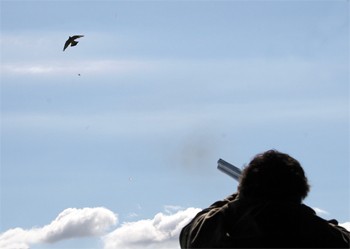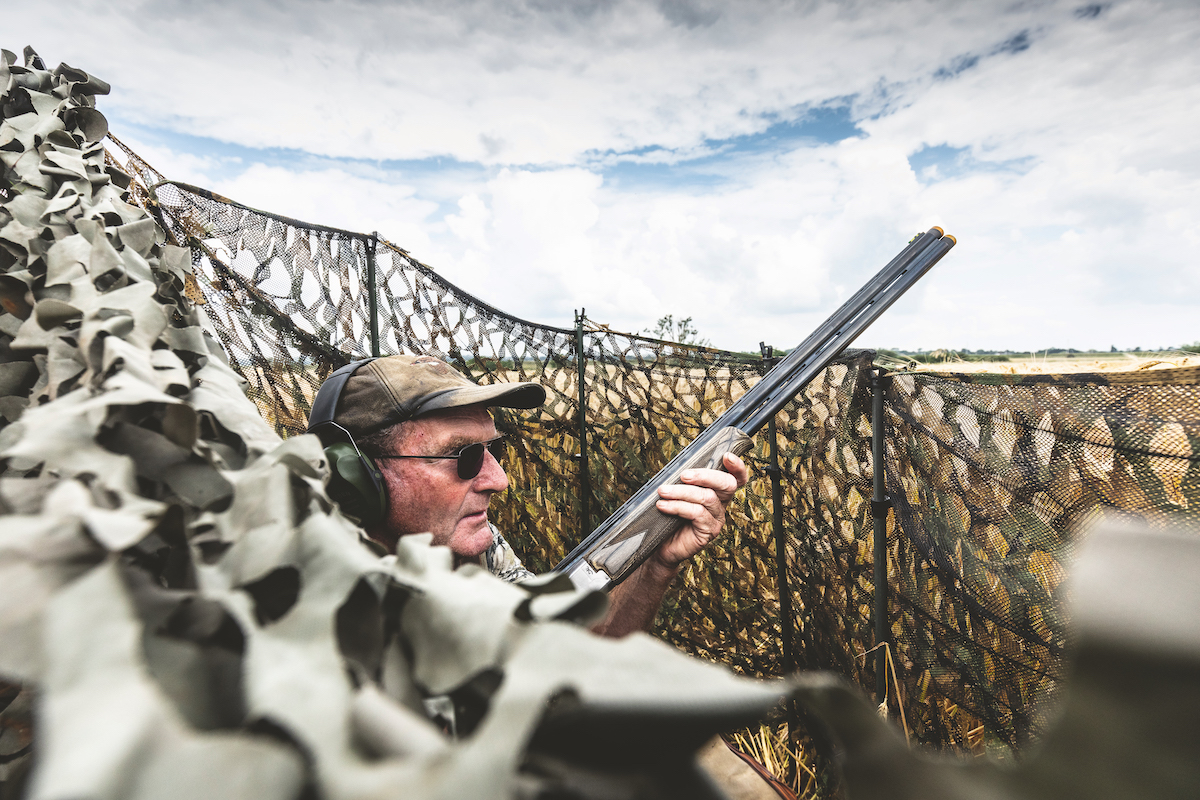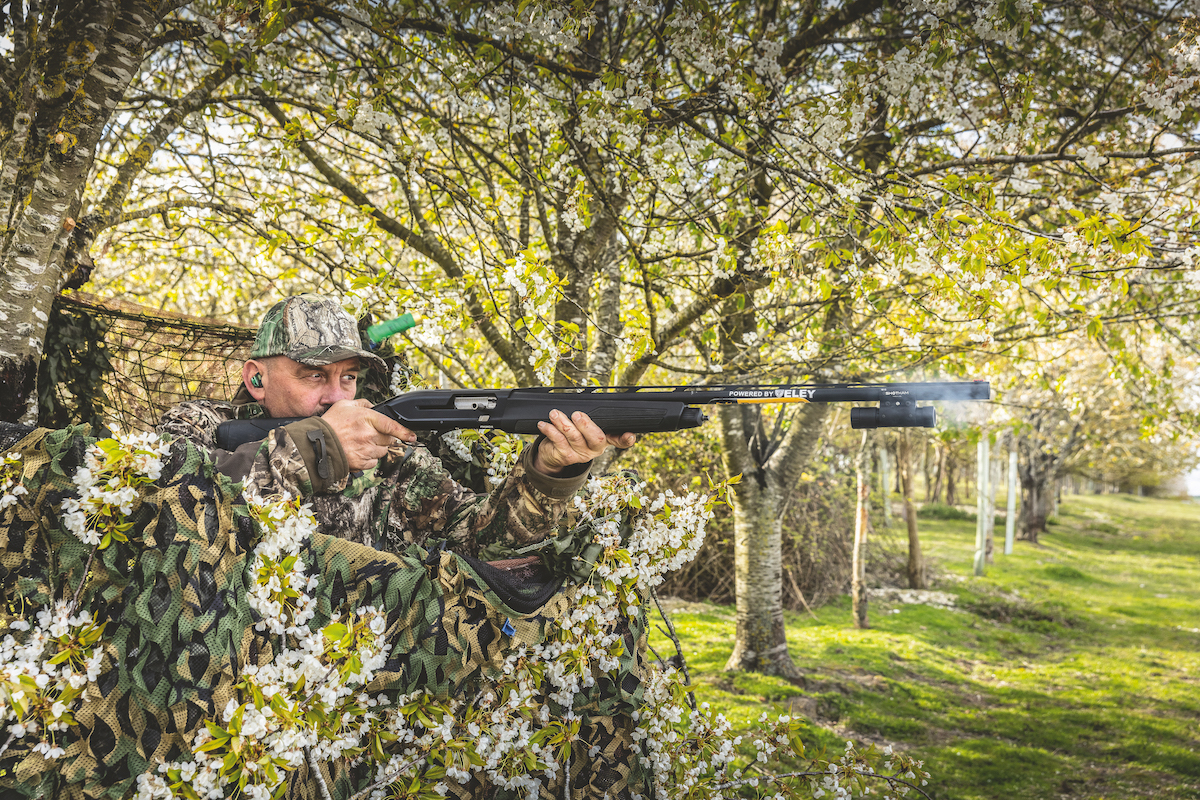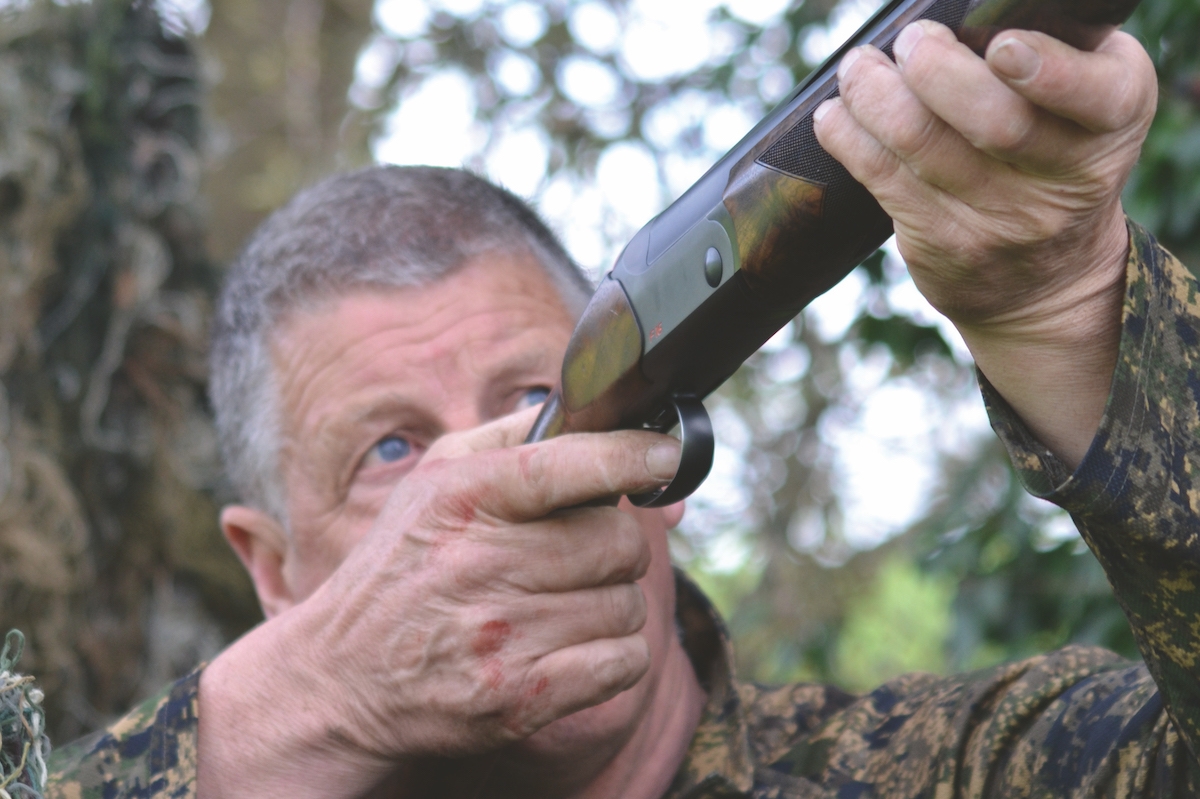When pigeons come home to roost
Roost shooting can be a rewarding and productive way to control pigeon numbers, but it needs careful planning and common sense, as Peter Theobald explains
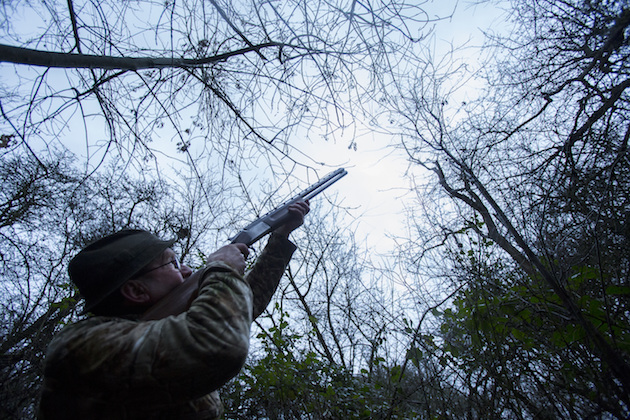
Peter rarely builds a hide when roost shooting, preferring to stay mobile
For the average pigeon shooter, the only time they get to have a go at roost shooting is on affairs organised by gamekeepers at the end of the season. And unless you are blessed by favourable weather on these occasions — that is to say a strong wind — you are likely to come away both disappointed and frustrated in equal measure.
Roost shooting pigeons as they return to their dormitories needs just as careful planning as a day’s decoying, something that is unlikely to happen if the date of the shoot has been decided weeks in advance. Add to the mix half a dozen other Guns whose main objective appears to be to boost the profits of cartridge manufacturers and you have reason to see why I am sceptical of killing many birds on these events.
The importance of wind
- As with pigeon decoying, several criteria need to come together. I will start with the most important and that is a strong wind — 25mph minimum. This will have the effect of drowning the noise of your shooting and encouraging the pigeons to approach the wood at a shootable height.
- It is also tiring for birds to flight into a strong wind carrying a full crop of food, so they will often be reluctant to go far after being shot at before attempting to have another go at getting in for the night.
- Also, pigeons will generally choose the lee side of the wood in which to roost, if the wind is particularly strong, making it easier for you to predict where they will head.
- Ideally, birds will have been left to feed in peace all day, before heading for the roost woods. Don’t think you can chase them around all day on the fields and then expect them to turn up in nice small bunches at roost time. Invariably they will stay on the fields, cramming their crops till the very last minute before descending on the woods en masse.

Woodies often cram their crops at this time of year
I used to have permission to shoot a very good roosting wood, in February, after the end of the gameshooting season. I had the luxury of going when I pleased and only ever shot it when the wind blew. What made it exceptional was the fact that pigeons in the surrounding area loved to feed on frosted potatoes rather than the usual oilseed rape. This meant that farmers were quite happy to leave them alone, resulting in birds filling up at their leisure, often returning home at least two hours before dusk. On windy nights, they would approach the wood like driven grouse, in small parties of five or six birds. Carrying a food cargo of up to one-fifth of their bodyweight, they would return again and again, desperate to get in.
Why do pigeons prefer spring grown rape?
I have noticed they invariably decoy much more easily – even when there are spring drillings in the vicinity. So…
Spring drillings and pigeons
Pigeon shooting on spring drillings makes a big difference from shooting over winter crops. In the colder months you have…
It is unfortunate that the only time most pigeon shooters get access to the woods is when the days are shortest and the birds are feeding on rape, the least nutritious of all the various crops they eat. This means they spend the last hour of daylight filling their crops to bursting point before heading home as late as possible. By this time of year, their flocking instinct will be at its keenest, usually meaning that every bird coming to your wood will have spent the day on the same field, often exiting it in one go. In my own little wood, I tend to do better in October or November, when the birds are often spread all over the district clearing the last of the stubbles and drillings. They have longer daylight hours in which to feed and, because they are eating grains, do not have to eat the same bulk as rape, resulting in them coming and going over a much longer period.

Telltale droppings will show you the birds’ favoured trees
Knowing where pigeons roost
Let’s assume that by luck or hard work you have secured permission to shoot a wood. How will you know if pigeons are using it as a roost?
- Park up with a set of binoculars one hour before dusk and watch.
- Choose the downwind side if possible, as pigeons will nearly always make their final approach upwind.
- If there are a worthwhile number turning up, it should not be difficult to find the general area where they intend to spend the night.
- Mixed fir woods are an obvious draw, the telltale splash of droppings under their favourite trees.
- Pigeons, if arriving early, will often head for taller trees before dropping down to the lower, warmer stuff. Again, droppings will indicate if this is the case.
- Pick an evening when the wind howls and get there early, 2.30pm at the latest. You don’t want to see pigeons streaming in while you are struggling to get your boots on.
- I seldom make a hide when I am roost shooting, preferring to remain mobile, moving as the situation dictates. It is amazing the difference that moving 10 yards can make to the amount of shooting you get.
- Station yourself 20 yards downwind of the trees you know the birds will head for, and be patient.
- If you have chosen your evening well, pigeons should be in range as they clear the trees. If not, let them go round again until they are lower.
- More roost shoots are ruined by Guns blasting at birds out of range than any other single factor. There is no excuse for this. The habit is infectious too, as some people think that if they don’t join in they will get no shooting at all but, as a result, end up with little hope of killing any.
- Some people wear face masks, as pigeons are quick to spot that flash of white peering up at them, but I prefer to keep my face lowered under a cap until the moment of truth.
- Shoot your wood sparingly, once a month maximum, and then only when it blows. This way you will keep them using it and you will enjoy some of the most testing shooting that pigeons can offer.


